Delicate Beauty: The Glass Art of Dale Chihuly
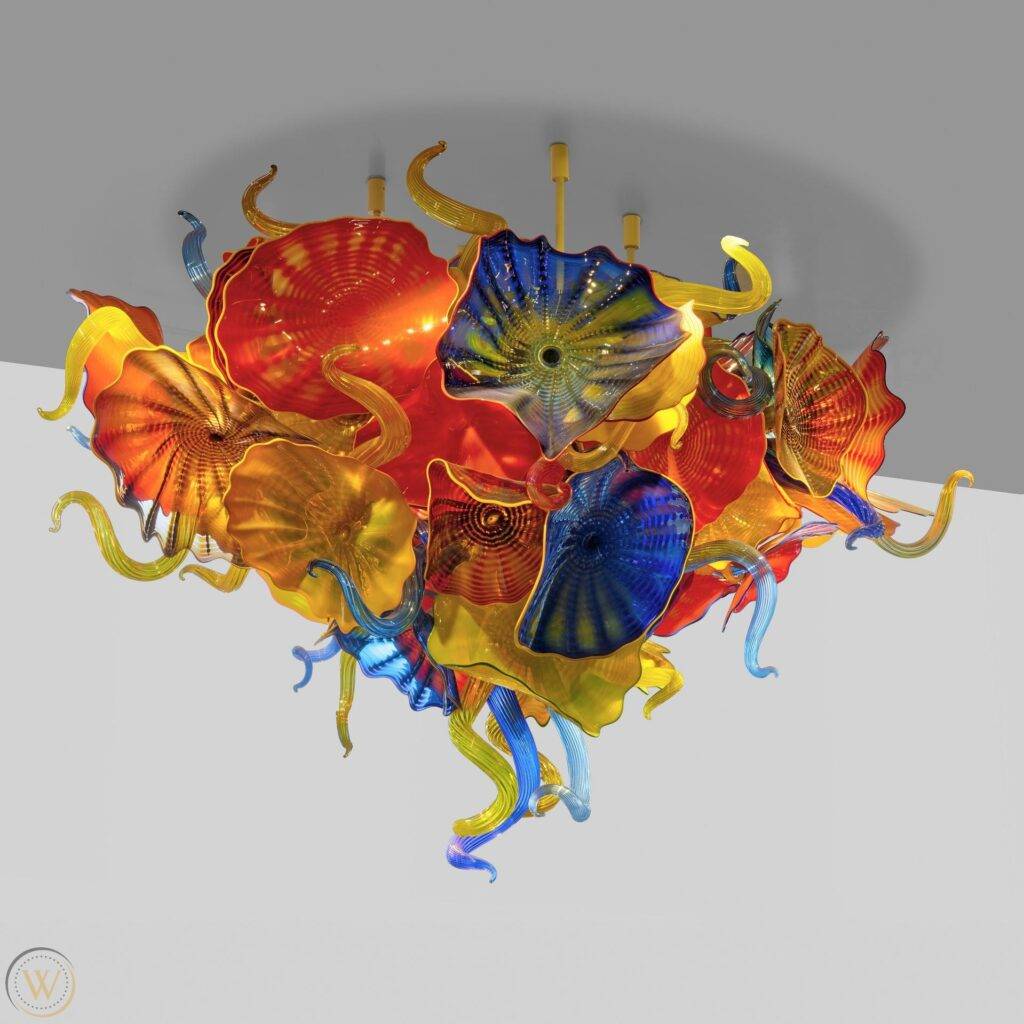
Living in Seattle, Dale Chihuly’s work can feel a bit inescapable. There is, of course, the Chihuly Garden and Glass exhibit downtown, a popular tourist spot nestled below the Space Needle. Then, there is the Ballard neighborhood studio and exhibition space, plus the private Boathouse studio, where you can see his personal collection and his assistants producing new work. And if you spend enough time in the area, you are bound to come across some of his colorful and delicate sculptures installed in museum stairwells or hanging from the ceiling in upscale restaurants.
Despite his extensive exhibition history and profound influence within glass art, and my years-upon-years of university-level art history courses, Chihuly somehow evaded my knowledge. I am now somewhat embarrassed to admit that I was wholly unaware of his art until a bundled tourism package made me feel obligated to visit the Chihuly Garden on vacation to Seattle years ago. Upon entering the space, I was stunned. Up until that point, I had relegated glass art to the realms of vases and smoking paraphernalia. But, boy, was I wrong. In the years since this excursion, I have not only relocated to Seattle and been exposed to significantly more of Chihuly’s work, but I have also come to appreciate his art—and glass art in general—in a much different manner.
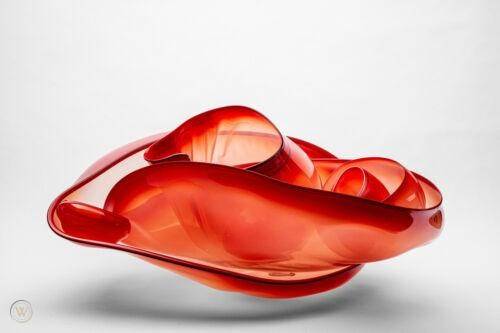
A Brief History of Glass Art
Humans have been using art to create decorative items for a long time. And I mean, a long time. The earliest examples of glass art date back over 5,000 years ago, when Egyptians used the malleable and colorful material to create beads. This practice has continued for centuries, as Middle Eastern and Chinese artisans also made beads and personal decoration items from the delicate material.
After beads came mosaics—those assemblages of tessera (pieces of glass, ceramic, and stone) neatly arranged to form patterns. Mosaics date back to Mesopotamia, and their script-like stories were expressed visually through these carefully designed patterns. Fast forward another 4,000 years or so, and we get the first glass vessels. Greeks during the Hellenistic period developed the core-forming method, which allowed them to make highly decorative glass bowls.
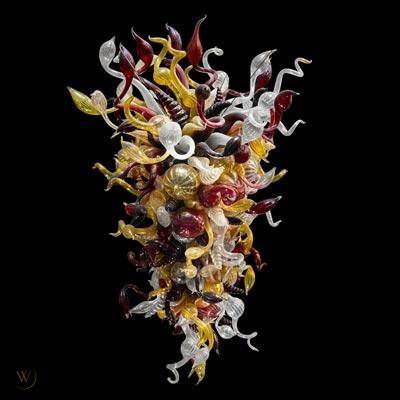
Roughly 3,000 years ago, Syrian artisans discovered that they could use pipes to blow air into blobs of molten glass, which developed into glassblowing as we know it. As the Roman Empire took hold, this technique hit Europe and quickly caught on across the globe. Early blown vessels were used for storage and the sale of items, but during the Renaissance, Venetian glassworkers took glassblowing into the realm of art. They began making large-scale ornate glass chandeliers, called ciocche, which are a clear precursor to the Chihuly chandeliers we marvel at now.
In modern times, glass has gradually risen from a commercial product’s or decor object’s status. Now, glass art objects are firmly within the fine art realm, thanks to many significant glass artists, like Louis C. Tiffany and Dale Chihuly.
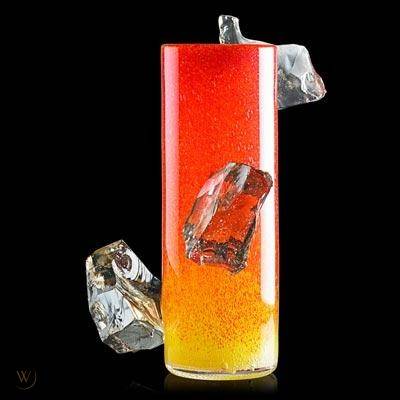
The Glass Pioneer: Dale Chihuly
An Evergreen State native, Dale Chihuly was born in 1941 just outside of Seattle, in Tacoma, Washington. In the early 1960s, he was exposed to glassworking while studying interior design at the University of Washington. After a trip abroad, he enrolled at the University of Wisconsin-Madison, the first major university to have a glass art program. Over roughly the next decade, he continued exploring glass design and sculpture, earning a master’s at the Rhode Island School of Design.
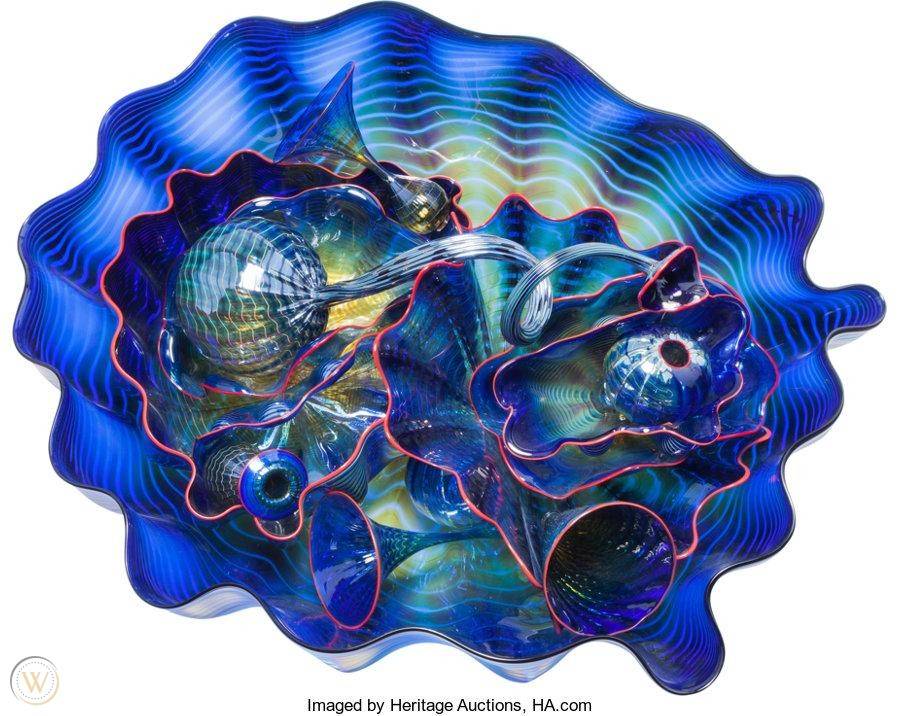
Chihuly left for Venice to learn glass design from the Italian masters upon completing his formal education. He spent the early years of the 1970s back in his home state, developing glass programs and art schools—then tragedy struck. In 1976, while visiting England, Chihuly was in a terrible auto accident. He was flung through the windshield, suffering minor body injuries and partially blinding him. A resourceful man, he found ways to continue working before suffering another injury—this time a dislocated shoulder—in 1979.
After these incidents, Chihuly focused on envisioning and conceptualizing his artwork, overseeing a coterie of capable gaffers to realize his visions. Over the intervening forty years, Chihuly and his team have executed an array of stunning glass pieces, forcing conversations about glass and fine art in the process. Chihuly has played an integral role in making glass art accessible and appealing to the broader public, forcing the traditional art world to grapple with its position towards him and glass art in general. Most of us probably do not have the budget for his large-scale multi-million-dollar sculptures. Luckily, you can often find some of his more minor works on the secondary market for reasonable prices, allowing anyone to have a little piece of glass art history.
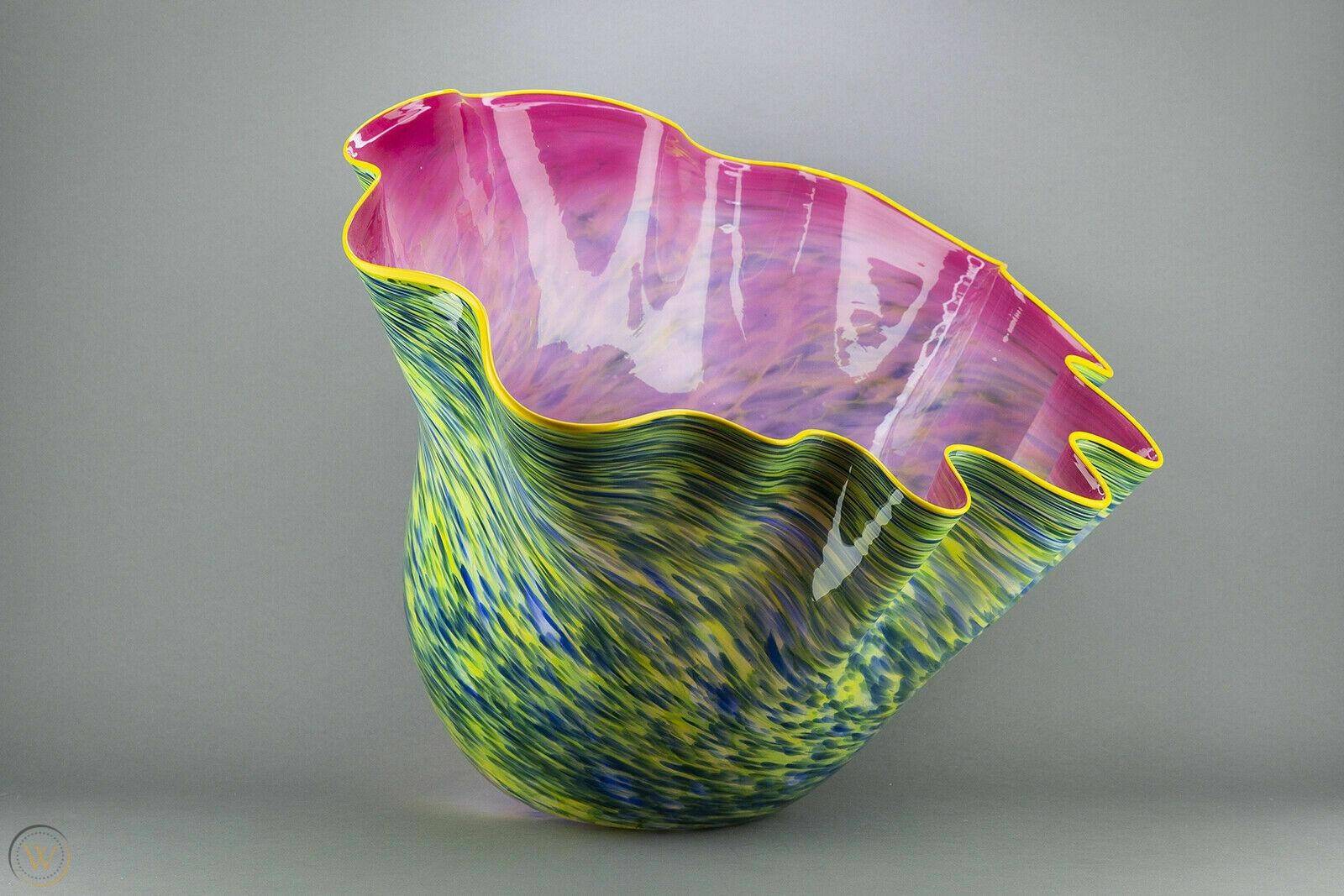
Collecting Chihuly
Chihuly’s glass art has an iconic style. Often including vibrant colors or delicate layers of shimmer, his nature-inspired designs are unique. His work often references a handful of different forms or series. The “baskets” are large sculptural glass forms holding smaller glass vessels, similar to the “macchia” sculptures, which resemble shells and seaforms. Speaking of ocean inspirations, Chihuly creates large “seaforms” and “persians” that both recall mollusks and octopi. Finally, the smaller-scale formal series includes his “cylinders,” small vessels with unexpected pops of glass remnants, and his “soft cylinders,” with decorative designs reminiscent of abstract paintings.
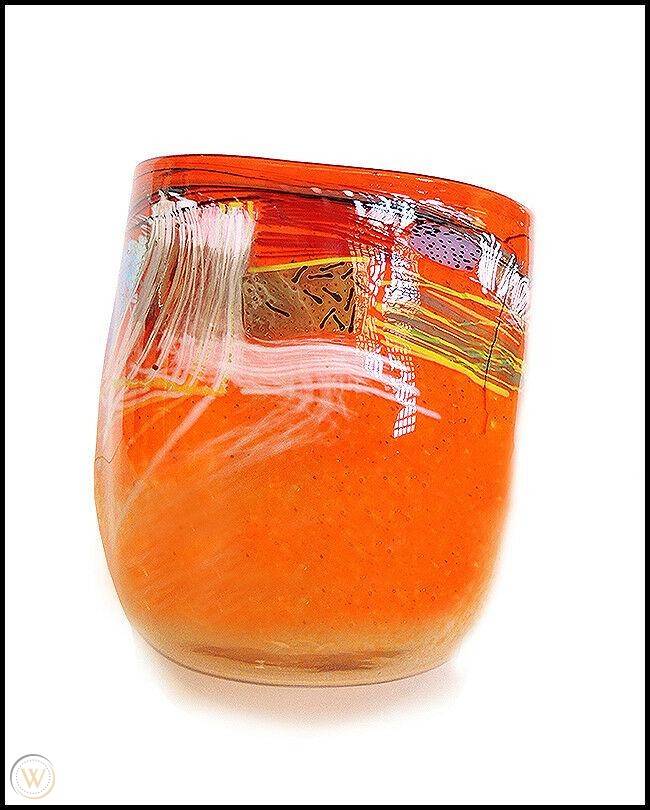
Building a glass art collection can be beautiful and rewarding. Now that I have spent a few years in the frequent gloom of Seattle, I can understand the more profound appeal of his works for residents in the area. His vibrant, lifelike forms bring needed levity and luminosity to the darkness that can creep up on our short rainy days, and they serve as a nice reminder of the brighter days ahead. This past fall, I purchased my first blown glass piece, an ornament, from the Chihuly Garden to benefit local arts organizations. Sure, it was not quite a Chihuly—but it still added a much-needed pop of bold lustrous orange to our tree. Maybe Santa will bring me a Chihuly original next year.
Megan Shepherd is a curator, freelance writer, and artist. She has worked in fine art museums for a decade and holds two master’s degrees in the field. When she takes a break from art, she enjoys science-fiction books, antiquing, backpacking, and eating her weight in Dim Sum.
WorthPoint—Discover. Value. Preserve.
The post Delicate Beauty: The Glass Art of Dale Chihuly appeared first on WorthPoint.
